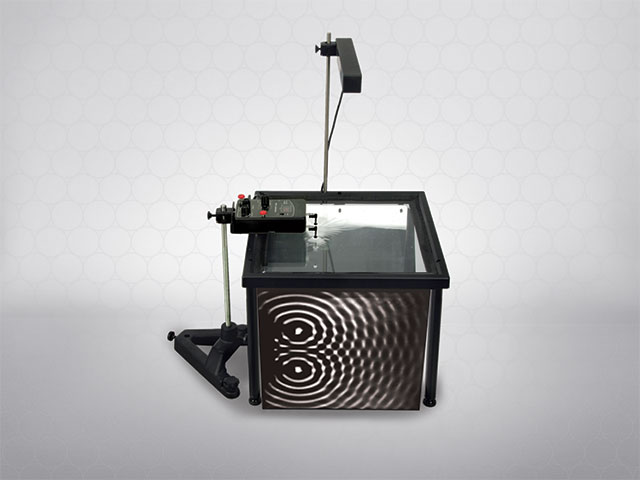Complete Experiments: Waves & Optics
Capstone 'EX' experiments include all the apparatus, sensors (when needed), manuals, and PASCO Capstone files you'll need in your student physics lab. For your convenience, we've listed all the downloadable files for each experiment below.
Grade Level: College
Subject: Physics
Activities
01) Vibrating Strings
The general appearance of waves can be shown by means of standing waves in a string. This type of wave is very important because most of the vibrations of extended bodies, such as the prongs of a tuning fork or the strings of a piano, are standing waves. The purpose of this experiment is to examine how the tension required to produce a standing wave in a vibrating string of fixed length and mass density is affected by the wavelength and the frequency of the wave.
02) Sound of Vibrating Strings
We will explore qualitatively how string tension, length, and linear density affect the sound of the vibrating string. Then we will take measurements for the following situations:
03) Light Intensity vs. Distance
The relative light intensity versus distance from a point light source is plotted. As the Light Sensor is moved by hand, the string attached to the Light Sensor that passes over the Rotary Motion Sensor pulley to a hanging mass causes the pulley to rotate, measuring the position. The experiment is repeated with an extended source.
04) Polarization of Light
Laser light is passed through two polarizers. As the second polarizer (the analyzer) is rotated by hand, the relative light intensity is recorded as a function of the angle between the axes of polarization of the two polarizers. The angle is obtained using a Rotary Motion Sensor that is coupled to the polarizer with a drive belt. The plot of light intensity versus angle can be fitted to the square of the cosine of the angle allowing us to verify the Law of Malus.
06) Interference and Diffraction of Light
The distances between the central maximum and the diffraction minima for a single slit are measured by scanning the laser pattern with a light sensor and plotting light intensity versus distance. Also, the distance between interference maxima for two or more slits is measured. These measurements are compared to theoretical values. Differences and similarities between interference and diffraction patterns are examined, including the effect of changing the wavelength of the light.
07) Interference and Diffraction - Wireless
Interference and diffraction patterns from laser light passing through various single-slits and multiple-slits are scanned and plotted in real time. These patterns are then examined for similarities and differences.
08) Speed of Light
This experiment uses the Foucault Method to determine the speed of light. Laser light passes through a series of lenses to produce an image of the light source at a measured position. The light is then directed to a rotating mirror, which reflects the light to a fixed mirror at a known distance from the rotating mirror. The laser light is reflected back through its original path and a new image is formed at a slightly different position.
09) Mechanical Waves
Standing waves in strings and air columns are studied. Using a sine wave generator to drive a string vibrator, the driving frequency, length, density, and tension of the string are varied to explore standing waves in strings and to determine the speed of the wave. For the sound waves in the air column, a speaker is used to drive a resonance tube.
10) Reflection and Refraction
Students experimentally derive the Law of Reflection for curved and flat mirrors. Snell’s Law is explored and the index of refraction for a piece of acrylic material is found.
11) Telescope and Microscope
Students construct an astronomical telescope, a Galilean telescope, and a compound microscope on the optical bench. Using a viewing screen with grid, they find and describe the ways in which images are changed by the multiple lens systems. The parallax method is used to locate virtual images. Students draw ray diagrams and measure the magnification of the instruments.


